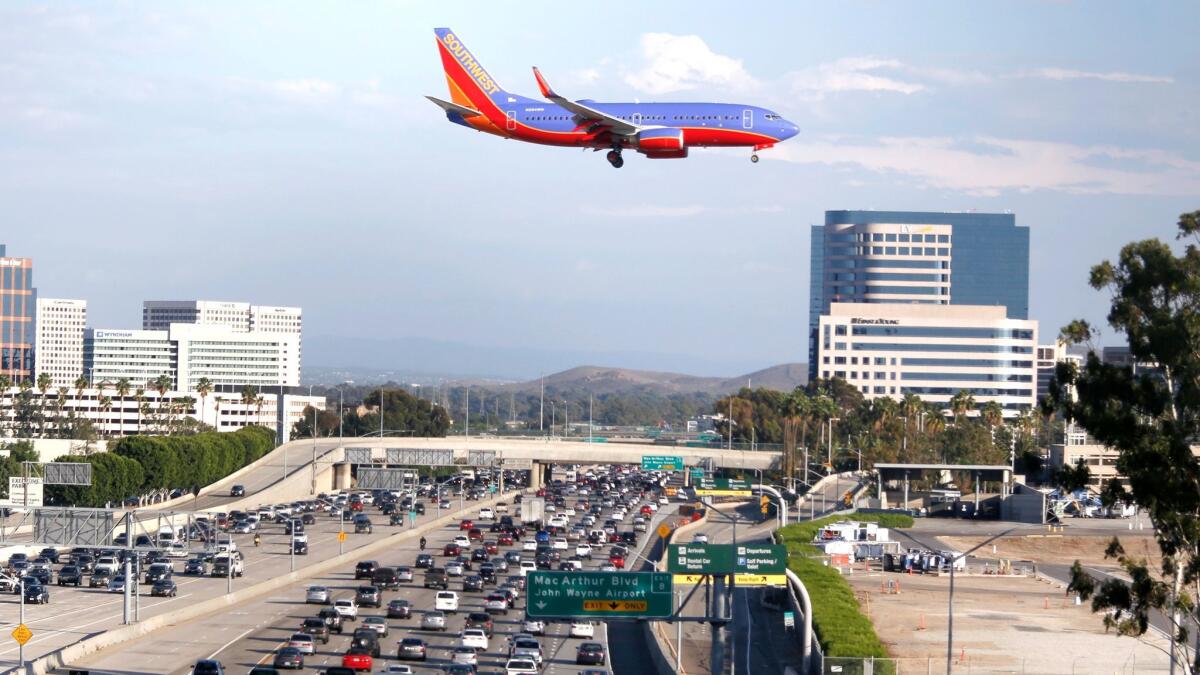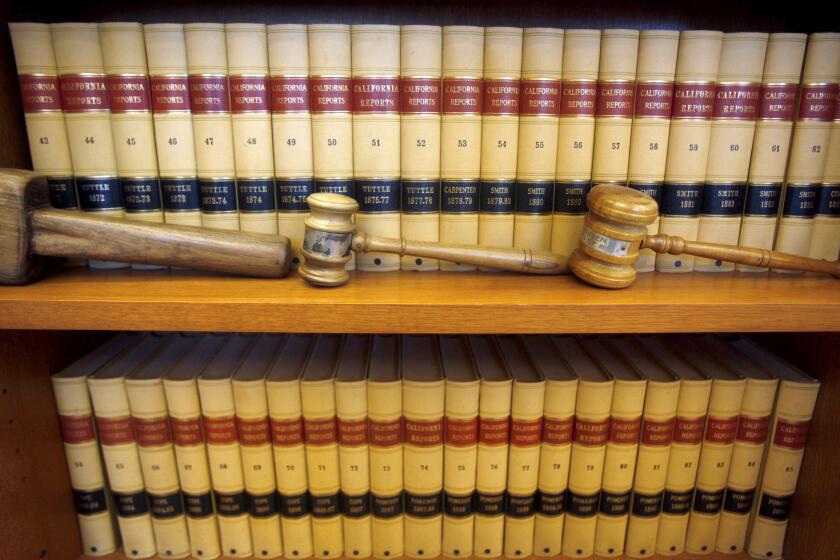Letters to the Editor: Many hands are responsible for JWA flights

Re: “When will something be done about JWA flights?”
Ms. Wright: Thank you for your email expressing concern regarding departures from John Wayne Airport.
It is important to understand, as a starting point, that the Federal Aviation Administration and, secondarily, the individual pilot-in-command of each aircraft, are responsible for the operation of aircraft in flight. Orange County, as the Airport proprietor, has no authority over aircraft operating procedures or airspace management under federal law.
Your email refers to a change to “prior noise abatement plans.” The changes you may be noticing in Dover Shores are likely the result of the FAA’s implementation of the Southern California Metroplex Project in March 2017.
According to the FAA, one of the primary objectives of this project was to create more repeatable, predictable flight paths to enhance safety and efficiency. Although, the FAA indicated that most aircraft would follow historical flight paths into and out of John Wayne Airport, it predicted that the new flights would result in less dispersion or “fanning” of aircraft and that has, in fact, occurred. Orange County and the cities of Laguna Beach and Newport Beach believe that the environmental documentation that provided the legal basis for FAA’s Southern California Metroplex Project was inadequate and have filed litigation on this matter; the litigation is pending.
Your email also refers to acceleration and altitude of departing aircraft. Some commercial aircraft operating at JWA use Noise Abatement Departure Procedures — which may include a power cutback — to meet the stringent noise limits as defined in the John Wayne Airport Settlement Agreement. The departure procedures cannot legally be required by JWA; they are developed by the airlines and approved by the FAA.
It is important to note that many of the newer, quieter aircraft do not need to use such procedures to meet the airport’s noise limits. The fact of the matter is that aircraft operating at JWA, even after implementation of the FAA’s Southern California Metroplex Project, are meeting the noise limits defined in the Settlement Agreement.
Lastly, I wanted to address your concern about the “poor air quality” and “airplane goo” you mentioned in your email. John Wayne Airport has adopted a variety of environmental policies and practices to reduce emissions at the airport. Air quality, greenhouse gas emissions, and mitigation measures at the airport are discussed in great detail in the Environmental Impact Report No. 617, which is available at the JWA website ocair.com.
However, under the 1990 Clean Air Act the Environmental Protection Agency has the primary role in setting standards for emissions from individual mobile sources. The Clean Air Act provides the EPA with the authority to set standards for fuels, motor vehicles, nonroad engines (such as construction or ground service equipment) and aircraft engines. If you would like to discuss your concerns with the EPA about aircraft emissions, contact the EPA Region 9 Main Office at (415) 947-8000.
We share your concern for the quality of life under both the approach and departure corridors at John Wayne Airport. That is why the county has been and will continue to be a strong defender — and enforcer — of the Settlement Agreement that was negotiated with the city of Newport Beach, the Airport Working Group and Stop Polluting Our Newport more than 30 years ago.
I hope this information is helpful to you. Please do not hesitate to contact the Airport Access and Noise Office at (949) 252-5185 or Noiseinfo@ocair.com, if you have additional questions.
Eric R. Freed, Deputy Airport Director, Public Affairs
John Wayne Airport, Orange County
How to get published: Email us at dailypilot@latimes.com. All correspondence must include full name, hometown and phone number (for verification purposes). The Pilot reserves the right to edit all submissions for clarity and length.
All the latest on Orange County from Orange County.
Get our free TimesOC newsletter.
You may occasionally receive promotional content from the Daily Pilot.



